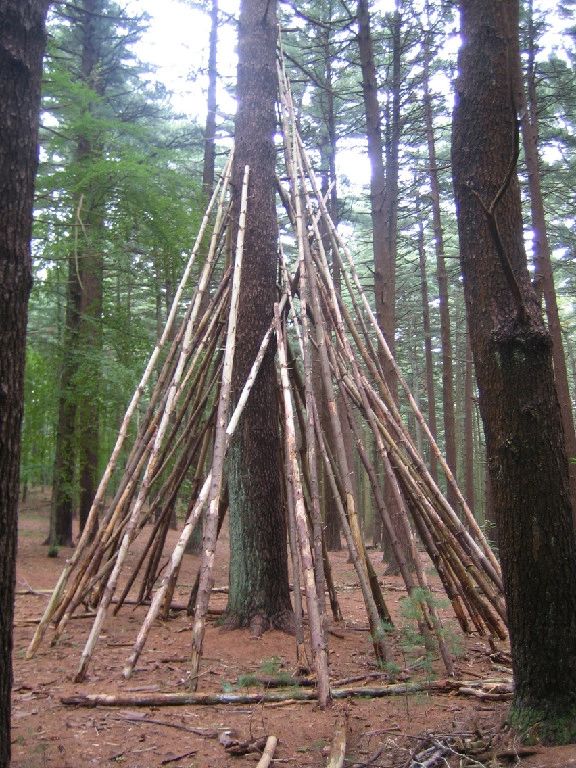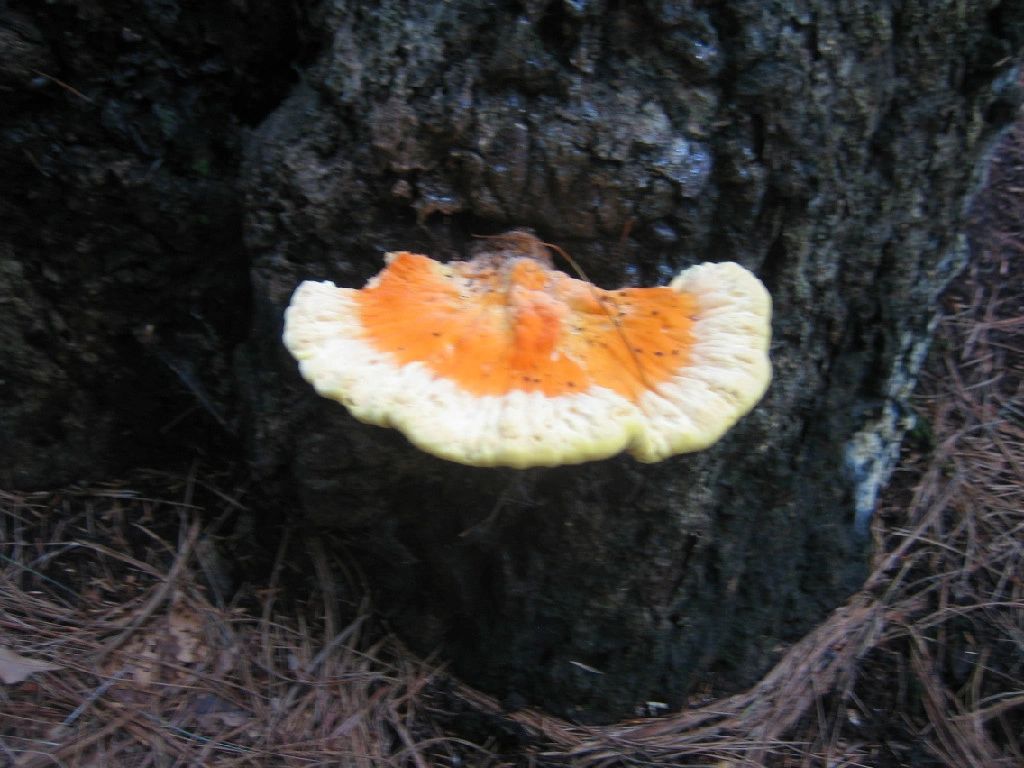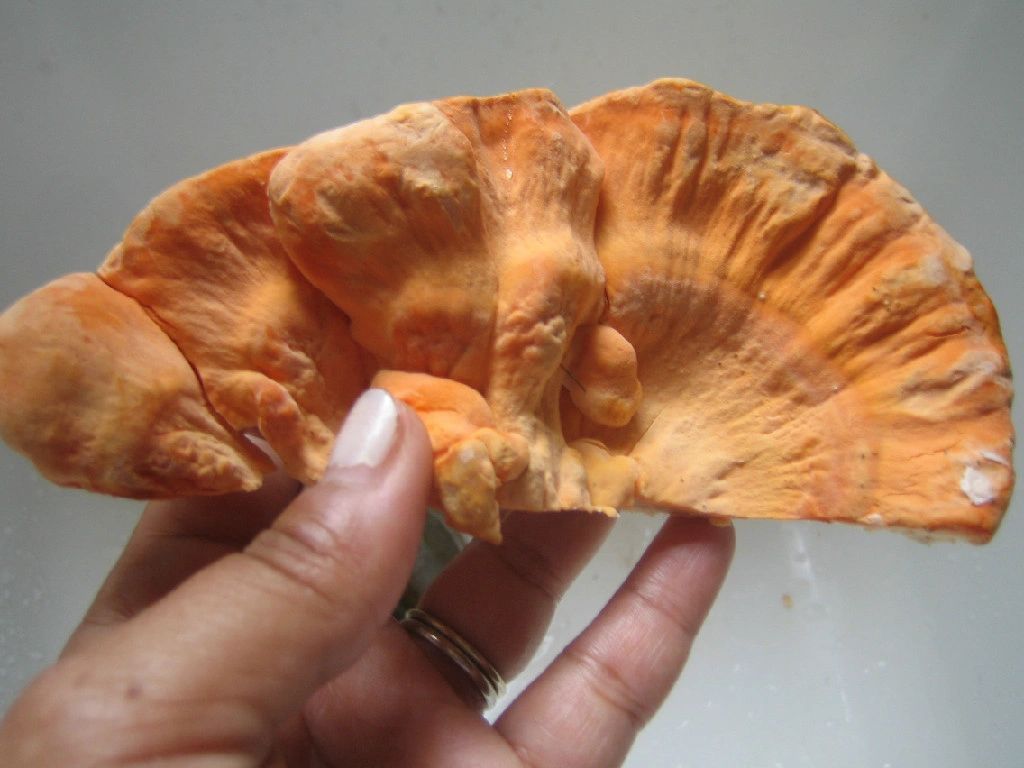YourPotluck.com Living & Eating on Long Island's East End
Excursions: Mushroom Picking: Looking for a Fungi

My name is Monique.
I'm a 2-time Emmy Award winning TV Producer.
Having been in the business for over 15 years I've produced my share of live tv cooking segments, but never had much time to devote to cooking myself.
Last year when I got married, I moved out of New York City to the east end of Long Island, to ...wait for it...The Hamptons.
Now before you roll your eyes, there's more to the Hamptons than mansions and celebrities.
The Hamptons have some of the most beautiful beaches in the world, miles of productive farmland, plus a rich clamming history that continues to this day.
When I moved out east and realized I was surrounded, not just by the bounty of the sea, but also local farms and vineyards, I couldn't wait to explore and sample my new environment.
That's what this blog is about. Cooking, living, exploring and sharing those experiences.
You'll notice that my blog is a little of this and a little of that, kind of like a potluck meal.
Thanks for visiting my blog
Recipe Index:
Zucchini Corn Bread
Pesto/Pistou
Nicoise Salad
Rasberry Rhubarb Crumble
Omelettes
Swedish Saffron Buns
Excursions:
Mushroom Picking
Recipe Index:
Zucchini Corn Bread
Pesto/Pistou
Nicoise Salad
Rasberry Rhubarb Crumble
Omelettes
Swedish Saffron Buns
Excursions:
Mushroom Picking

What's this? What's that? What do you call this one?
Can you eat it?
That's usually how one of Joel & Peggy Horman's mushroom forays begin. The couple, who lead weekly hikes through the Long Island woods, are used to people shoving strange mushrooms into their faces. They run the Long Island
Mycological Club.
Mycology is the study of fungi. Based in Ridge, New York, the club meets every Saturday morning from April through November, exploring Long Island's woods from Glen Cove to Riverhead.
Mycological Club.
Mycology is the study of fungi. Based in Ridge, New York, the club meets every Saturday morning from April through November, exploring Long Island's woods from Glen Cove to Riverhead.
For Peggy, it's been a lifelong love affair. "I always enjoyed looking at them and my mother used to cook them."
Then about 22 years ago, while at a floral show, she became curious about picking them as well and joined the New York Mushroom Society.
When she met and married Joel, who was already an avid birdwatcher, together they started their own mushroom club on Long Island. "It was very small", she says.
"Most members are there are to find out which edible mushrooms are around them and what kind of habitat they thrive in."
Then about 22 years ago, while at a floral show, she became curious about picking them as well and joined the New York Mushroom Society.
When she met and married Joel, who was already an avid birdwatcher, together they started their own mushroom club on Long Island. "It was very small", she says.
"Most members are there are to find out which edible mushrooms are around them and what kind of habitat they thrive in."
Which is exactly my reason for joining their latest weekend foray. Every now and then the Hormans hold an open foray, that allows non-members to come along and learn about mushroom picking.
While hiking in the Long Island Pine Barrens, I've often come across different varieties of mushrooms, but have always left them where I found them, for fear of poisoning myself.
It's frustrating, because I have mushroom picking in my genes. My mother used to pick mushrooms when she was growing
up in Northern Sweden. Unfortunately these days she can't tell the edible from the inedible ones anymore.
It's frustrating, because I have mushroom picking in my genes. My mother used to pick mushrooms when she was growing
up in Northern Sweden. Unfortunately these days she can't tell the edible from the inedible ones anymore.
Today we're in Prosser Pines Preserve in Middle Island and it's a warm, overcast day. Some people show up wearing Wellington boots, their long pants tightly tucked in. One man says he considered wearing his waders for fear of ticks and mosquitos. For a moment I panic, fearing my T-shirt, shorts and sneakers ensemble is woefully inadequate, but then I remember that I nearly emptied half a can of bug repellent on myself before leaving the house.
After Peggy and Joel explain the basics of the foray, we enter the park. I'm immediately struck by how beautiful, majestic and quiet it is. The pine trees tower above us and there's a quiet, almost reverent hush, as if we've entered a church. Sunlight filters high up through the branches. I almost forget why I'm here, fighting a desire to wander off and explore the woods by myself.

Initially we stick together as Joel points out mushrooms along the path, but within minutes the group has scattered as if on a woodland scavenger hunt.

Initially we stick together as Joel points out mushrooms along the path, but within minutes the group has scattered as if on a woodland scavenger hunt.
I'm amazed at the diversity of mushroom life we come across
in the park. During the course of about two hours, we find and
identify at least 10 species.
Some are edible, most are not.
Peggy charachterizes mushrooms into four categories: Edible, Non-Edible; as in not very tasty, Poisonous: meaning they will make you very sick, then finally Deadly: they will kill you if you don't seek treatment right away.
Those destinctions are echoing in my head as the group clusters round a dead tree in a clearing. As we approach, I hear someone call out chicken mushroom with excitement.

Attached to the stump of the dead tree is a large, bright yellow-orange bulbous shaped object, growing out of it's side.

Attached to the stump of the dead tree is a large, bright yellow-orange bulbous shaped object, growing out of it's side.
This, I'm told is a chicken mushroom or Sulfureus and it's edible. When Peggy asks if anyone wants to take it home, no one says anything, so I step forward and break a piece off with my hand. It's about the same size as my hand and feels soft and rubbery to the touch.
But as I'm about to place it in a plastic bag that I brought along for the day, Peggy holds up her hand and says, "No."
Instead she hands me a small, wax paper bag, saying it helps the mushroom stay fresh longer.
Instead she hands me a small, wax paper bag, saying it helps the mushroom stay fresh longer.
Another striking mushroom we come upon is called a Stroblimysis, or "Old Man of the Woods". It's a traditional-looking mushroom with a large, light brown head, with darker brown spots. It almost looks like a leopard mushroom. Peggy says it's edible, but "not amazing."

One of the more unusual mushrooms we find that day, while not edible, is very pretty. It's called a "Coral" mushroom, because it looks like a piece of coral you might see in the ocean. Most of the ones we find are white or light grey, but a few have an almost translucent lavender color to them.

Suddenly one of the group walks out of the woods, into the
clearing where we've gathered, his hands full of small, orange mushrooms, that look almost like flowers.
"Chaunterelles!" Peggy cries out, clasping her hands together in joy, as half the group charges off in the direction from where he came from.

Now that's a mushroom that I've heard of, so I follow along to get a better look and hopefully find some of my own.
Chaunterelles grow on the ground. We find more of them growing amongst pine needles.
As the group exits the woods, we literally stumble across a large patch of bright orange chaunterelles, growing in the open grass of the parking lot. People are walking past them,
oblivious to the treasures on the ground. We descend on them
oblivious to the treasures on the ground. We descend on them
like happy vultures.
As we head home with our finds, Peggy's last piece of advice resonates with me. "Don't eat the entire mushroom right away. Cook and eat a small piece, then wait and see if you have a reaction to it."
Once home, I take a few pieces of the chaunterelles that have broken off and throw them in the farthest corner of our backyard, where it's pretty woodsy. Maybe they'll take root, who knows?

Then I cook up one of the chaunterelles, sauteing it with a little butter and take my first taste. It has a sweet, nutty flavor.
At first my husband Ric refuses to taste it, jokingly saying "one of us has to be able to drive to the hospital." But after about an hour or two, when I show no signs of keeling over, he agrees to a taste.
For dinner, I saute the rest and throw them in with the pork chops we're having that night. They're so tender, they practically melt in my mouth. Then for the rest of the evening, Ric and I eye each other carefully, occasionally asking each other how we feel.
For dinner, I saute the rest and throw them in with the pork chops we're having that night. They're so tender, they practically melt in my mouth. Then for the rest of the evening, Ric and I eye each other carefully, occasionally asking each other how we feel.
A day or two later, with no signs of mushroom poisoning, I decide to cook up the chicken mushroom.


This one is more daunting and I peruse the internet for ideas. Unfortunately, I can't find any chicken mushroom recipes, so
I first saute some of the mushroom to get a basic idea of the flavor.
From what I've read, it's supposed to taste or remind you of chicken, hence the name. But the taste is more mushroomy to me, though the texture is quite meaty, maybe that's where the chicken name comes from.

The only information I can find online recommends the mushroom be cooked into sauces and stews, but with no clear recipes I decide to chop up it up and add it to a fusilli pasta dish, adding in chopped zucchini, fresh herbs from our garden, then top it with a warm cheese sauce. Then I bake the pasta dish like a casserole, for about 40 minutes at 365 degrees.

When done, it's got to be one of the most fragrant dishes I've ever cooked. The mushroom smell is so strong, almost like a perfume, with a stronger, nuttier taste then before.
Since I haven't dropped dead from my tastings, Ric eats the chicken mushroom casserolle and enjoys it enough for seconds.
I'm looking forward to my next mushroom foray with Joel and Peggy and every now and then I wander to the far backyard, looking for signs that those chaunterelles took root. Maybe,
just maybe.
just maybe.


